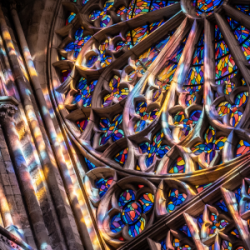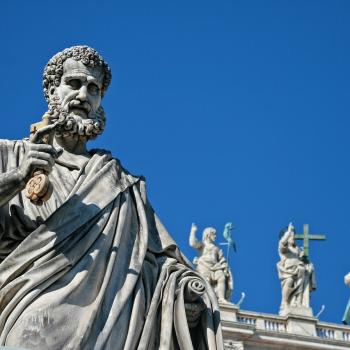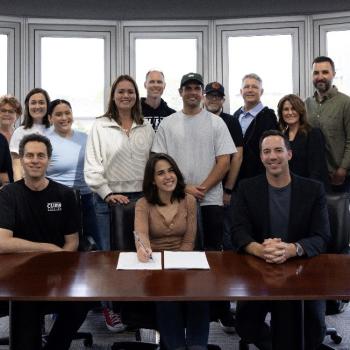The next several stops were in Newark's Ironbound section, a vibrant community. The array of contaminated sites is stunning. Athletic Field B was built in 1999 to provide much-needed recreation space for the community. In 2007, the state ordered the field closed because the artificial turf had deteriorated and released dangerous amounts of lead, endangering thousands of children. A nearby facility, abandoned in the 1990s, contains high levels of PCBs and other toxins. The EPA recently agreed to remove some of the site's most toxic soil so that the site could be considered as the location of a future school.
One of our final stops was at the Ironbound incinerator, the state's largest garbage incinerator. Located within a half mile of two low-income housing projects, it's one of New Jersey's largest legal emitters of mercury, a potent neuro-toxin. GreenFaith and the Ironbound Community Corporation have entered into negotiations with the incinerator's owner, seeking to reduce these emissions. Less than a mile away is the Diamond Alkali Superfund site, one of the most toxic concentrations of dioxin in the world. Much of the Agent Orange used in Vietnam was manufactured here. Now, the poisonous remains sit underneath a concrete mound on the banks of the Passaic River.
Almost everyone experiences these tours as an introduction to an alien reality. Yet this dimension of reality is something with which religious institutions must grapple if we are to become leaders in restoring creation. Loving wilderness and open space is important, but it is not enough. We must learn to love creation in its broken places -- in places we have broken. Seeing these places and learning their stories can be a first step.
In our experience, it is not easy for religious institutions to address these issues. For predominantly Caucasian congregations, environmental racism is a painfully shameful reminder of the scope and destructive power of racism. For communities of color, environmental injustice often seems like just one more item on a long list of oppressions from which they already suffer. But religious-environmental work without an engagement of environmental justice is inadequate. At GreenFaith, we hear a clear call to work for a safe, healthy environment -- for all people.
Conclusion
Protecting the environment is finally coming to be recognized as one of the great moral issues facing humanity. More and more religious groups are getting involved. I've argued in this essay that religious groups should engage these issues from three different vantage points -- spirituality, stewardship, and justice. I've shared stories showing how GreenFaith has done this work. It is encouraging to see so many other religious leaders beginning to respond to this call.
One final note: It is common, and tempting, to think that the religious-environmental movement just represents our efforts to protect creation. This is true. But there is a second dimension that is as, or more, important. Engaging this issue is vital to a strong future for religious institutions. If religion cannot provide meaningful leadership on one of the most pressing issues facing the human family, then it will lose its ability to present itself as a moral force. It will lose relevance and credibility. And, rightly, it will lose influence.
The environmental crisis cries out for a widespread, strong religious response. The environment needs religious leadership. But the reverse is true as well. For the sake of the earth and of religion, this is an opportunity that religious leaders cannot afford to overlook.
This article is part of a larger series published in Love God, Heal Earth and is reprinted with permission.
The Rev. Fletcher Harper, an Episcopal priest, is Executive Director of GreenFaith, an interfaith environmental coalition based in New Jersey.




